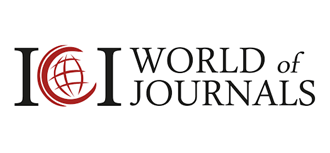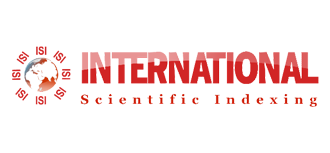- Review Article
- Abstract
- Introduction
- Mechanism of Action of PD-1 Inhibitors
- Clinical Trials and Efficacy in NSCLC
- First-Line Therapy for Advanced or Metastatic NSCLC
- Second-Line and Later Therapy for NSCLC
- Combination Therapies
- Biomarkers and Personalized Medicine
- Adverse Events and Immune-Related Toxicities
- Conclusion
- References
PD-1 Inhibitors in Non-Small Cell Lung Cancer: Advances in Immunotherapy and Future Prospects
Vianka Vanessa Yanez Montalvo1, Melanie Dayana Yanez Montalvo1, Ileana Patricia Crespin Henriquez2, Soura Rajeshwara3, Anusha Kunapuli4, Rishita Dave5, Christina Thymalil6, Atishey Bansal7, Kinjal Shah8, Chinyere Pamugo9, Andrea Gabriela Galecio Chao10 and Maria Isabel Gomez-coral 11*
1 Universidad de Guayaquil, Ecuador
2 Universidad Evangélica de El Salvador
3 Shimoga Institute of Medical Sciences, Shivamogga, India
4 People’s College of Medical Sciences and Research Centre, Bhopal, India
5 University of Medicine and Health Sciences, St. Kitt
6 Nova Southeastern University Dr. Kiran C. Patel College of Osteopathic Medicine
7 Harbin Medical University, China
8 Rutgers Edwards J. Bloustein School of Planning and Public Policy, NJ, USA
9 University of Texas Health Houston Behavioral Sciences Campus Harris County Psychiatric Center
10 Universidad de Guayaquil, Ecuador
11 Universidad del Valle, Mexico
Submission: October 17, 2024; Published: October 25, 2024
*Corresponding Address: Maria Isabel Gomez-Coral, Universidad del Valle, Mexico
How to cite this article: Vianka Vanessa YM, Melanie Dayana YM, Ileana Patricia CH, Soura R, Anusha K, et al. PD-1 Inhibitors in Non-Small Cell Lung Cancer: Advances in Immunotherapy and Future Prospects. Canc Therapy & Oncol Int J. 2024; 27(5): 556223. DOI:10.19080/CTOIJ.2024.27.556223
- Review Article
- Abstract
- Introduction
- Mechanism of Action of PD-1 Inhibitors
- Clinical Trials and Efficacy in NSCLC
- First-Line Therapy for Advanced or Metastatic NSCLC
- Second-Line and Later Therapy for NSCLC
- Combination Therapies
- Biomarkers and Personalized Medicine
- Adverse Events and Immune-Related Toxicities
- Conclusion
- References
Abstract
PD-1 inhibitors, such as pembrolizumab and nivolumab, have transformed the treatment landscape for advanced non-small cell lung cancer (NSCLC), offering substantial improvements in survival. Pembrolizumab, particularly effective in tumors with high PD-L1 expression (≥50%), has demonstrated significant overall survival (OS) and progression-free survival (PFS) benefits as monotherapy, and when combined with chemotherapy for patients with lower PD-L1 expression or EGFR/ALK-negative mutations. Clinical trials like KEYNOTE-024, KEYNOTE-189, and KEYNOTE-407 have reinforced the efficacy of pembrolizumab, showcasing its impact in both non-squamous and squamous NSCLC subtypes. Nivolumab, combined with ipilimumab, has also shown promise, especially in patients with PD-L1 expression ≥1%, as evidenced by the CheckMate-227 and CheckMate-9LA trials. As second-line therapy, both pembrolizumab and nivolumab have demonstrated efficacy in patients progressing after platinum-based chemotherapy, further solidifying their role in NSCLC management. Biomarkers such as PD-L1 expression and tumor mutational burden (TMB) play a crucial role in guiding immunotherapy choices, ensuring a more personalized treatment approach. Despite the benefits, PD-1 inhibitors are associated with immune-related adverse events (irAEs) that require careful management. The future of NSCLC treatment lies in optimizing biomarker-driven strategies, improving combination therapies, and addressing challenges such as resistance to immunotherapy. PD-1 inhibitors represent a major advancement, significantly improving outcomes for patients with advanced NSCLC.
Keywords: Immunotherapy; Non-Small Cell Lung Cancer (NSCLC); PD-1 Inhibitors
Abbreviation: AVMs: Arteriovenous Malformations; NSCLC: Non-Small Cell Lung Cancer; PD-L1: Programmed Death-Ligand 1; EGFR: Epidermal Growth Factor Receptor; ALK: Anaplastic Lymphoma Kinase; ORR: Overall Response Rate; PFS - Progression-Free Survival; OS: Overall Survival; TPS: Tumor Proportion Score; TMB: Tumor Mutational Burden; irAEs: Immune-Related Adverse Events; CTLA-4: Cytotoxic T-Lymphocyte Antigen 4; HR: Hazard Ratio; CI: Confidence Interval; AE: Adverse Event
- Review Article
- Abstract
- Introduction
- Mechanism of Action of PD-1 Inhibitors
- Clinical Trials and Efficacy in NSCLC
- First-Line Therapy for Advanced or Metastatic NSCLC
- Second-Line and Later Therapy for NSCLC
- Combination Therapies
- Biomarkers and Personalized Medicine
- Adverse Events and Immune-Related Toxicities
- Conclusion
- References
Introduction
Lung cancer is the leading cause of cancer incidence and mortality worldwide [1]. Non-small cell lung cancer (NSCLC), the most common epithelial lung cancer, accounts for ~85% of all lung cancer types [2]. The most common types of NSCLC are squamous cell carcinoma, large cell carcinoma and adenocarcinoma, but there are several other types that occur less frequently, and all types can occur in unusual histological variants. Although NSCLCs are generally known to be associated with cigarette smoke, adenocarcinomas may be found in non-smoker patients [3]. If identified at an early stage (stage I), NSCLC has a favorable prognosis (5 year survival rate of 70-90%). However, advanced disease (stage III and IV) is associated with a poorer prognosis [4]. Recently, research into tumor immunity has opened avenues for targeted molecular therapy and immunotherapies against programmed cell death protein 1 (PD-1) receptors, in the treatment of NSCLC [5,6]. Notably, the US Food and Drug Administration (FDA) and the European Medicines Agency (EMA) have approved 2 drugs against the PD-1 receptor, Pembrolizumab and Nivolumab, to treat advanced disease [6,7].
Pembrolizumab (formerly lambrolizumab) is a selective humanized IgG4 kappa monoclonal antibody currently approved by the FDA for treatment of metastatic NSLSC and advanced melanoma [8]. It was first approved in the United States by the Food Drug Administration (FDA) in September of 2014 and in Europe by the EMA in July of 2015 [8]. The EMA has approved Pembrolizumab for the treatment of NSCLC, melanoma, classical Hogkin’s lymphoma, urothelial cancer, head and neck squamous cell carcinoma, renal cell carcinoma, oesophageal cancer, gastroesophageal junction cancer, gastric cancer, triple-negative breast cancer, endometrial carcinoma, cervical cancer, biliary tract cancer, and colorectal cancer (when microsatellite instability-high or mismatch repair deficient) [9].
Nivolumab is a fully human IgG4 monoclonal antibody PD-1 receptor blocker [10,11]. It was first approved in the United States by the FDA in December of 2014 [11] and by the EMA in June of 2015 [12]. It is currently approved for use for the treatment of resectable and metastatic NSCLC, metastatic melanoma, malignant pleural mesothelioma, advanced renal cell carcinoma, classical Hodgkin’s lymphoma, squamous cell carcinoma of head and neck, urothelial carcinoma, colorectal carcinoma, hepatocellular carcinoma, esophageal cancer, gastroesophageal junction cancer and gastric cancer [13].
- Review Article
- Abstract
- Introduction
- Mechanism of Action of PD-1 Inhibitors
- Clinical Trials and Efficacy in NSCLC
- First-Line Therapy for Advanced or Metastatic NSCLC
- Second-Line and Later Therapy for NSCLC
- Combination Therapies
- Biomarkers and Personalized Medicine
- Adverse Events and Immune-Related Toxicities
- Conclusion
- References
Mechanism of Action of PD-1 Inhibitors
The Programmed cell death protein 1 (PD-1) is a transmembrane protein belonging to CD2/CTLA-4 superfamily. The Programmed cell death ligand 1 (PD-L1) belongs to B7 family of T cell co-inhibitory molecules [14]. PDL1 expressed by cancer cells binds to PD-1 on the surface of T-cells, thereby inhibiting T cell activation and leading to cancer immune escape [15]. The interaction between PD-1 and PD-L1 can transmit inhibitory signals within cells, suppressing lymphocyte proliferation and activation, thereby diminishing immune capacity [16]. When tumor- infiltrating lymphocytes (TILs) recognize tumor antigens, they initiate ‘adaptive resistance’ mediated by PD-1/PD-L1 pathway to assist tumor immune evasion and distant metastasis [17]. Specifically, this is manifested as follows, (I) PD1/PD-L1 interaction suppresses the activation and proliferation of T cells, promoting T cell dysfunction and apoptosis. (II) PD-1/PD-L1 interaction enhances the function of regulatory T cells (Tregs) and induces immune tolerance. (III) PD-1/PD-L1 interaction promotes the polarization of TAM and other immune cells into tumor-promoting phenotypes, facilitating immune escape and cancer progression. (III) Signaling of PD-L1 within cancer cells may prevent the apoptosis of tumor cells themselves, and the interaction of PD-L1 with CD80 can suppress the immune response [18].
Pembrolizumab is a humanized monoclonal IgG4 kappa antibody directed against human cell surface PD-1 on lymphocytes. When PD-L1 engages with PD-1, the T-cell function becomes inhibited; pembrolizumab blocks the PD-1: PD-L1 complex formation allowing improved T- cell mediated killing [19,20]. Nivolumab is also a humanized monoclonal IgG4 antibody that binds to PD-1 receptors with high specificity and affinity. In cancer, aberrant PD-L1 expression by tumor cells or immune cells in the tumor microenvironment deactivates PD-1 expressing tumor-infiltrating lymphocytes, allowing tumor cells to escape immune recognition and elimination [21,22]. By inhibiting PD-1 function, nivolumab releases immune cells from pathological immune suppression, allowing them to recognize and counter tumor cells.
- Review Article
- Abstract
- Introduction
- Mechanism of Action of PD-1 Inhibitors
- Clinical Trials and Efficacy in NSCLC
- First-Line Therapy for Advanced or Metastatic NSCLC
- Second-Line and Later Therapy for NSCLC
- Combination Therapies
- Biomarkers and Personalized Medicine
- Adverse Events and Immune-Related Toxicities
- Conclusion
- References
Clinical Trials and Efficacy in NSCLC
The efficacy of PD-1 inhibitors in treatment of NSCLC has been investigated in several notable studies. KEYNOTE-024 was an open-label, phase 3 study that was published in 2016 which investigated the role of monotherapy Pembrolizumab in NSCLC. The study randomly assigned 305 untreated patients to receive either Pembrolizumab (at fixed dose of 200 mg q3wks) or platinum-based chemotherapy. Inclusion criteria included PD-L1 expression on ≥ 50% tumor cells and exclusion criteria required that patients have no mutation of EGFR (epidermal growth factor receptor) or ALK (anaplastic lymphoma kinase) gene translocation [23]. In the intention-to-treat population, median progression-free survival was 10.3 months in the pembrolizumab group (95% CI, 6.7 to not reached) vs 6.0 months in the control platinum chemotherapy group (95% CI, 4.2 to 6.2) (hazard ratio for disease progression or death 0.50, 95% CI, 0.37 to 0.68, P< 0.001). Furthermore, the estimated rate of overall survival at 6 months was 80.2% in the Pembrolizumab group versus 72.4% in the chemotherapy group (hazard ratio for death 0.60, 95% CI, 0.41 to 0.89; P=0.005) [24]. Response rate in Pembrolizumab group was 44.8% compared to 27.8% in chemotherapy group, as well as treatment-related adverse effects of all grades were less frequent in pembrolizumab group, 73.4%, compared to chemotherapy group, 90.0% [23]. This resulted in FDA approval of pembrolizumab as first line therapy for metastatic NSCLC with PD-L1 expression of ≥ 50% and without EGFR/ALK mutations in October 2016. As of July 2017, median follow up was 25.2 months during which, median overall survival (OS) of the pembrolizumab group was 30.0 months versus 14.2 months in chemotherapy group, indicating that pembrolizumab therapy alone reduced risk of desk by 37% compared to platinum-based chemotherapy [23].
Although KEYNOTE-024 was the first clinical study to show improved overall survival (OS) in NSCLC with pembrolizumab monotherapy compared to chemotherapy, this was only demonstrated in patients with PD-L1 expression of ≥ 50% with no EGFR/ALK mutation which only represents 30% of patients receiving PD-L1 inhibitor therapy. KEYNOTE-042 sought to address this by investigating whether the population of patients with PD-L1 expression between 1-49% benefitted from pembrolizumab. KEYNOTE-042 was a randomized, controlled, open-label, phase III trial study which studied the OS of NSCLC patients with PD-L1 express ≥ 1% with pembrolizumab monotherapy (200 mg q3wks) vs chemotherapy [25]. Patients in both groups were subdivided into PD-L1 levels of 1-19%, 20-49% and ≥50% [24]. Once median follow-up reached 12.8 months, the OS of pembrolizumab group was significantly greater in all three subgroups compared to chemotherapy alone (16.7 vs 12.1, 17.7 vs 13.0, 20.0 vs 12.2). The rate of treatment-related adverse effects in the pembrolizumab group was 63% compared to 90% in the chemotherapy group [25]. KEYNOTE-042 was able to confirm that pembrolizumab was beneficial as first-line monotherapy in NSCLC regardless of PD-L1 expression in tumor cells. Based on these results, FDA expanded indications of pembrolizumab to include NSCLC patients with PD-L1 ≥1% and without EGFR/ALK gene mutations.
The synergistic relationship between PD-L1 inhibitor immunotherapy and chemotherapy together has also been explored and shown improved efficacy compared to that of chemotherapy alone. KEYNOTE-021G was an open-label, randomized, Phase 2, multi-cohort study which enrolled 123 patients that were chemotherapy naive, stage 3B or 4, with non-squamous NSCLC with EGFR/ALK negative mutations [26]. Patients were randomly assigned into pembrolizumab plus chemotherapy (carboplatin, pemetrexed) and chemotherapy alone group. At a median follow-up time of 23.9 months, the overall response rate (ORR) was 56.7% in the PD-L1 inhibitor plus chemotherapy group compared to 30.2% in the chemotherapy alone group. 37% of the experimental group had died at the time of analysis versus 56% in the chemotherapy alone group. Median progression free survival (PFS) in the pembrolizumab and chemotherapy group was 24.0 months compared to 9.3 months in the chemotherapy group [3]. At the two year follow-up mark, KEYNOTE-021G demonstrated that pembrolizumab combined with traditional chemotherapy was able to reduce disease progression by 47% and risk of death by 44% in advanced non-squamous NSCLC patients [24]. Furthermore, these findings are reinstated in KEYNOTE-189 which is a randomized, placebo-controlled phase III clinical trial, which enrolled 616 patients with untreated metastatic non-squamous NSCLC without EGFR/ ALK mutations [27]. It’s important to note that about one-third of patients in this study had negative PD-L1 expression of tumor. The data cut-off date was presented at the American Society of Clinical Oncology’s Annual Meeting and results showed that median OS was 22 months in pembrolizumab combined with chemotherapy compared to 10.6 months in the placebo combination group, which is more than double. The two-year survival rate was 45.7% in the pembrolizumab combination group versus 27.3% in the placebo chemotherapy combination group [27]. KEYNOTE-189 and KEYNOTE-021G were able to demonstrate the synergistic effect of pembrolizumab combined with traditional chemotherapy compared to chemotherapy alone in non-squamous advanced NSCLC with negative EGFR/ALK mutations.
In like manner, compared to non-squamous NSCLC, the squamous subtype only makes up 15% of NSCLC and survival rate is about 5% even with comprehensive surgery, radiotherapy and chemotherapy. KEYNOTE-407 is a double-blind, Phase III study enrolled 559 patients with metastatic squamous NSCLC and assigned subjects to pembrolizumab and chemotherapy combination group or placebo-chemotherapy combination group in a 1:1 ratio [24]. At the median follow-up of 7.8 months, the median OS in the experimental group was 15.9 months compared to 11.3 months in the placebo combination group, regardless of PD-L1 expression. Median PFS was 6.4 months in the pembrolizumab-combination group versus 4.8 months in the placebo-combination group [24]. Thus, KEYNOTE-407 exemplified similar efficacy of pembrolizumab combination therapy in metastatic squamous NSCLC with PD-L1 ≥1% similar to that in the more popularly studied non-squamous NSCLC.
Both pembrolizumab and nivolumab are anti-PD1 monoclonal antibodies that are within the IgG4 subtype, however they differ in epitope-paratope binding which may explain differences in clinical efficacy between the two. CheckMate-026 is a Phase 3, open label, randomized which compared the efficacy of monotherapy nivolumab versus platinum chemotherapy in stage 4/recurrent PD-L1 positive NSCLC [28]. 541 patients were enrolled in this study and median progression free survival was 4.2 months in the nivolumab group compared to 5.9 months in the chemotherapy group. In addition, in patients with PD-L1 expression ≥5% nivolumab did not improve progression free survival (HR, 1.15; 95% CI 0.91 to 1.45; P = 0.25) [28]. It is notable that compared to chemotherapy nivolumab displayed a favorable safety profile with rate of treatment related AE of 71% in any stage NSCLC compared to 92% in the chemotherapy group [28]. More recently, CheckMate-227 published in 2022 studied the combined efficacy of nivolumab and ipilimumab (anti-CTLA-4 monoclonal antibody) compared to chemotherapy alone [29]. This randomized, open-label, Phase 3 trial found that four-year overall survival was 29% vs 18% in PD-L1≥1% and 24% vs 10% in PD-L1<1%, in immunotherapy combination and chemotherapy alone group respectively [29]. At four-year follow-up, even with patients oss nivolumab and ipilimumab for two years, the immunotherapy combination demonstrated long-term increase in survival in NSCLC.
- Review Article
- Abstract
- Introduction
- Mechanism of Action of PD-1 Inhibitors
- Clinical Trials and Efficacy in NSCLC
- First-Line Therapy for Advanced or Metastatic NSCLC
- Second-Line and Later Therapy for NSCLC
- Combination Therapies
- Biomarkers and Personalized Medicine
- Adverse Events and Immune-Related Toxicities
- Conclusion
- References
First-Line Therapy for Advanced or Metastatic NSCLC
Pembrolizumab (Keytruda), a PD-1 immune checkpoint inhibitor, is widely used as a first-line treatment for advanced or metastatic non-small cell lung cancer (NSCLC), with treatment decisions guided primarily based on PD-L1 expression levels on tumor cells [30]. For patients whose tumors express PD-L1 ≥50%, pembrolizumab is approved for use as monotherapy, provided the tumors do not harbor EGFR (endothelial growth factor receptor) or ALK (anaplastic lymphoma kinase) mutations [31,32]. This recommendation is supported by the results of the KEYNOTE-024 trial, which demonstrated significantly improved overall survival (OS) and progression-free survival (PFS) compared to standard platinum-based chemotherapy, with a median OS of 30 months versus 14.2 months, respectively [31].
For patients with PD-L1 expression between 1-49% or PD-L1- negative tumors, pembrolizumab is typically used in combination with chemotherapy [33,34]. Two pivotal studies, KEYNOTE-189 and KEYNOTE-407, support this combination therapy approach. In KEYNOTE-189, pembrolizumab was combined with pemetrexed and platinum chemotherapy in patients with nonsquamous NSCLC, demonstrating significant improvements in both OS and PFS, irrespective of PD-L1 expression [33]. Similarly, KEYNOTE-407 evaluated pembrolizumab with carboplatin and either paclitaxel or nab-paclitaxel in patients with squamous NSCLC, also showing a marked survival benefit compared to chemotherapy alone [34].
PD-L1 expression is assessed using the Tumor Proportion Score (TPS), where a score of ≥50% qualifies patients for pembrolizumab monotherapy, while lower scores often indicate the need for combination therapy [35]. For nonsquamous NSCLC, pembrolizumab is typically paired with pemetrexed and a platinum-based agent, while for squamous NSCLC, it is combined with carboplatin and paclitaxel/nab-paclitaxel. Importantly, pembrolizumab is not indicated for patients with EGFR or ALK mutations, as targeted therapies are more effective in those cases [30-35]. The introduction of pembrolizumab has shifted the paradigm of NSCLC treatment, offering personalized therapy with improved survival outcomes based on PD-L1 expression.
Nivolumab (Opdivo) in combination with ipilimumab (Yervoy), a CTLA-4 inhibitor, has emerged as an important option in the first-line treatment of advanced or metastatic non-small cell lung cancer (NSCLC), particularly for patients whose tumors express PD-L1 ≥1% [36,37]. This combination leverages dual immune checkpoint inhibition, with nivolumab targeting the PD-1/PD-L1 pathway and ipilimumab enhancing T-cell activation via CTLA-4 blockade. The CheckMate-227 trial demonstrated significant benefits for this combination, showing improved overall survival (OS) compared to chemotherapy, particularly in patients with PD-L1 expression ≥1%. Even in those with PD-L1- negative tumors, the combination showed efficacy, offering an immunotherapy-based alternative to chemotherapy [38]. Further evidence from the CheckMate-9LA trial supported the addition of two cycles of platinum-based chemotherapy to nivolumab and ipilimumab in patients regardless of PD-L1 status. This combination also demonstrated survival advantages, particularly for those who might not have otherwise been ideal candidates for immunotherapy alone [39].
The nivolumab and ipilimumab regimen is especially advantageous for patients who may not tolerate long-term chemotherapy due to its more favorable toxicity profile compared to traditional chemotherapy. As a result, it offers a valuable first-line treatment option, particularly for patients who wish to avoid chemotherapy, with clinical trials confirming its efficacy in improving long-term outcomes [36-39]. This dual immunotherapy combination represents an innovative approach, focusing on boosting the patient’s immune response to effectively target and eliminate cancer cells in NSCLC. PD-1 inhibitors, such as pembrolizumab and nivolumab have significantly transformed the treatment of advanced or metastatic NSCLC particularly as first-line therapies. These therapies are associated with fewer and less severe side effects compared to chemotherapy, with common immune-related adverse events (irAEs) being mild, such as fatigue and rash, although serious irAEs like pneumonitis or colitis can occur. Additionally, PD-1 inhibitors offer a chemotherapy-free treatment option for patients with high PD-L1 expression, providing an effective alternative with a more favorable toxicity profile [40]. For those with lower PD-L1 expression (1-49%) or no PD-L1 expression, combination approaches with chemotherapy or other immunotherapies, such as nivolumab with ipilimumab, have shown efficacy across a broader patient population [39].
However, PD-1 inhibitors come with certain limitations. Their efficacy is often lower in patients with PD-L1-negative or low-expressing tumors, limiting the use of monotherapy in these populations [33,34]. Additionally, PD-1 inhibitors can take weeks or months to show a clinical response, making them less suitable for patients with rapidly progressing disease who need immediate tumor reduction [40]. Despite their generally favorable side effect profile, PD-1 inhibitors can cause irAEs, which may require immunosuppressive treatments and can pose serious risks [41]. Moreover, not all patients respond to PD-1 inhibitors, and some may develop acquired resistance over time, though the mechanisms behind this are not fully understood [41]. PD-L1 expression, the primary biomarker used to guide therapy, is not always predictive of response, as some patients with high expression may not respond, and others with low expression may benefit, complicating treatment decisions. Finally, cost and accessibility remain significant challenges, as PD-1 inhibitors are expensive and may not be readily accessible to all patients or healthcare systems [40]. Overall, PD-1 inhibitors have revolutionized NSCLC treatment by offering a personalized, mechanism-based therapy that significantly improves outcomes for many patients, particularly when used in combination approaches. However, the variability in response rates, potential for immune-related toxicity, and limitations tied to biomarker expression require careful patient selection and management.
- Review Article
- Abstract
- Introduction
- Mechanism of Action of PD-1 Inhibitors
- Clinical Trials and Efficacy in NSCLC
- First-Line Therapy for Advanced or Metastatic NSCLC
- Second-Line and Later Therapy for NSCLC
- Combination Therapies
- Biomarkers and Personalized Medicine
- Adverse Events and Immune-Related Toxicities
- Conclusion
- References
Second-Line and Later Therapy for NSCLC
Pembrolizumab and nivolumab have shown significant efficacy as second-line and later therapies for non-small cell lung cancer (NSCLC) in patients who have progressed after platinum-based chemotherapy. Both agents target the programmed death-1 (PD-1) pathway, which tumors often exploit to evade immune detection. In clinical trials, nivolumab demonstrated improved overall survival compared to docetaxel, a standard second-line chemotherapy, for previously treated patients with NSCLC, irrespective of PD-L1 expression levels. Similarly, pembrolizumab showed efficacy in this setting, particularly in patients whose tumors expressed PD-L1, with higher expression levels correlating with better responses. Notably, patients with PD-L1 tumor proportion scores (TPS) of 50% or more have derived greater benefits from pembrolizumab compared to standard chemotherapy. These findings underscore the importance of PD-L1 status as a biomarker for selecting patients likely to benefit from pembrolizumab, while nivolumab may be considered more broadly across PD-L1 expression levels therapies [42-45].
- Review Article
- Abstract
- Introduction
- Mechanism of Action of PD-1 Inhibitors
- Clinical Trials and Efficacy in NSCLC
- First-Line Therapy for Advanced or Metastatic NSCLC
- Second-Line and Later Therapy for NSCLC
- Combination Therapies
- Biomarkers and Personalized Medicine
- Adverse Events and Immune-Related Toxicities
- Conclusion
- References
Combination Therapies
The use of PD-1 inhibitors in combination with other therapeutic modalities has emerged as a key strategy to enhance the efficacy of immunotherapy in NSCLC. Combining PD-1 inhibitors such as pembrolizumab or nivolumab with chemotherapy has demonstrated superior outcomes in clinical trials, particularly in first-line treatment settings. For example, pembrolizumab combined with platinum-based chemotherapy has shown significantly improved overall survival and progression-free survival compared to chemotherapy alone in patients with metastatic NSCLC. This combination appears to stimulate the immune system while simultaneously targeting the cancer cells directly, creating a more favorable environment for immunotherapy. Additionally, combination strategies involving PD-1 inhibitors and other immunotherapies, such as CTLA-4 inhibitors (e.g., ipilimumab), are being explored. Nivolumab combined with ipilimumab has shown promising results, particularly in tumors with high tumor mutational burden (TMB). Targeted therapies, including those directed at oncogenic drivers like EGFR or ALK mutations, are also being investigated alongside PD-1 inhibitors, although these combinations present more complexity and challenges in patient selection [42-45].
- Review Article
- Abstract
- Introduction
- Mechanism of Action of PD-1 Inhibitors
- Clinical Trials and Efficacy in NSCLC
- First-Line Therapy for Advanced or Metastatic NSCLC
- Second-Line and Later Therapy for NSCLC
- Combination Therapies
- Biomarkers and Personalized Medicine
- Adverse Events and Immune-Related Toxicities
- Conclusion
- References
Biomarkers and Personalized Medicine
The role of biomarkers in selecting patients for PD-1 inhibitor therapy in non-small cell lung cancer (NSCLC) is pivotal for the success of immunotherapy. Two key biomarkers, PD-L1 expression and tumor mutational burden (TMB), have been instrumental in identifying patients likely to benefit from treatment with PD-1 inhibitors like pembrolizumab and nivolumab [46]. PD-L1 expression, as assessed by immunohistochemistry, is widely used as a predictive marker. The degree of PD-L1 expression on tumor cells is positively correlated with the likelihood of response to PD-1 inhibitors. Studies have demonstrated that patients with higher PD-L1 expression, particularly those with over 50% tumor cell staining, tend to have better outcomes from immunotherapy, leading to its adoption as a selection criterion for these treatments. However, PD-L1 expression alone is not a perfect predictor, as some patients with low or no PD-L1 expression still respond to PD-1 inhibitors. This has prompted ongoing research into additional biomarkers to complement PD-L1 in refining patient selection [47]. Another crucial biomarker, tumor mutational burden (TMB), has emerged as a complementary indicator of response to PD-1 inhibitors. TMB refers to the number of somatic mutations present in a tumor genome, with a high TMB reflecting an increased likelihood of generating neoantigens that can be recognized by the immune system. Several studies, including analyses from the CheckMate 227 trial, have shown that patients with a high TMB are more likely to benefit from PD-1/ PD-L1 inhibitor therapy, independent of PD-L1 expression. As a result, TMB is being incorporated into clinical practice to guide treatment decisions, although it is not yet universally applied [48].
In addition to PD-L1 and TMB, other emerging biomarkers are being investigated to enhance the precision of immunotherapy. For instance, the expression of immune-related genes and the presence of specific immune cell populations in the tumor microenvironment are being explored as potential predictors of response. The identification of tumor-infiltrating lymphocytes (TILs), which indicate an active immune response within the tumor, has been linked to better outcomes in immunotherapy. Similarly, genetic mutations in DNA repair pathways, such as deficiencies in mismatch repair (MMR), have been associated with heightened sensitivity to PD-1 inhibitors. Moreover, circulating biomarkers, such as blood-based TMB and liquid biopsy techniques, offer less invasive options for predicting response and monitoring treatment efficacy in real-time [49].
As the field of personalized medicine continues to evolve, the integration of multiple biomarkers will likely lead to more precise and individualized approaches to PD-1 inhibitor therapy. This strategy promises to maximize therapeutic benefit while minimizing unnecessary toxicity in patients with NSCLC. While PD-L1 expression and TMB currently form the backbone of biomarker-driven immunotherapy, emerging biomarkers are set to refine and improve patient selection further, ultimately advancing the effectiveness of treatment strategies [50].
- Review Article
- Abstract
- Introduction
- Mechanism of Action of PD-1 Inhibitors
- Clinical Trials and Efficacy in NSCLC
- First-Line Therapy for Advanced or Metastatic NSCLC
- Second-Line and Later Therapy for NSCLC
- Combination Therapies
- Biomarkers and Personalized Medicine
- Adverse Events and Immune-Related Toxicities
- Conclusion
- References
Adverse Events and Immune-Related Toxicities
PD-1 inhibitors are associated with a distinct profile of immune-related adverse events (irAEs), which result from their mechanism of action—enhancing immune activity against cancer cells. Common irAEs include dermatologic issues such as rash and pruritus, gastrointestinal symptoms like diarrhea and colitis, and endocrine disorders such as hypothyroidism and adrenal insufficiency. In rare cases, more severe toxicities like pneumonitis, hepatitis, and myocarditis can occur. Management of irAEs typically involves immunosuppressive therapy, such as corticosteroids, particularly for moderate to severe toxicities. For mild irAEs, treatment interruption may suffice. Monitoring patients for irAEs is crucial, especially during long-term use, as some toxicities may develop late into treatment or even after discontinuation. Early recognition and intervention are key to minimizing complications and maintaining patients on therapy [51,52].
- Review Article
- Abstract
- Introduction
- Mechanism of Action of PD-1 Inhibitors
- Clinical Trials and Efficacy in NSCLC
- First-Line Therapy for Advanced or Metastatic NSCLC
- Second-Line and Later Therapy for NSCLC
- Combination Therapies
- Biomarkers and Personalized Medicine
- Adverse Events and Immune-Related Toxicities
- Conclusion
- References
Conclusion
PD-1 inhibitors, particularly pembrolizumab and nivolumab, have redefined the therapeutic landscape of advanced non-small cell lung cancer (NSCLC), offering improved survival outcomes, especially when used in biomarker-driven approaches. Their success as first-line therapies, either as monotherapy or in combination with chemotherapy, has been well-documented in key clinical trials such as KEYNOTE-021G, KEYNOTE-189, and CheckMate-227. Furthermore, their use in second-line settings has provided new treatment avenues for patients who have progressed after traditional chemotherapy. The identification of biomarkers, including PD-L1 expression and tumor mutational burden (TMB), has allowed for a more targeted and personalized approach to therapy, optimizing patient selection and enhancing therapeutic efficacy.
Despite their benefits, PD-1 inhibitors are not without limitations. Immune-related adverse events (irAEs), while generally manageable, require careful monitoring and intervention to prevent serious complications. Additionally, the response rates vary, with some patients experiencing resistance or suboptimal outcomes, particularly those with low PD-L1 expression or rapidly progressing disease. Future directions in NSCLC treatment will likely involve refining biomarker strategies, enhancing combination therapies, and addressing the challenges of resistance to maximize patient benefit. Overall, PD-1 inhibitors represent a critical advancement in NSCLC management, significantly improving the prognosis for many patients while paving the way for continued innovation in immunotherapy.
- Review Article
- Abstract
- Introduction
- Mechanism of Action of PD-1 Inhibitors
- Clinical Trials and Efficacy in NSCLC
- First-Line Therapy for Advanced or Metastatic NSCLC
- Second-Line and Later Therapy for NSCLC
- Combination Therapies
- Biomarkers and Personalized Medicine
- Adverse Events and Immune-Related Toxicities
- Conclusion
- References
References
- Fitzmaurice C, Abate D, Abbasi N, et al. (2019) Global, Regional, and National Cancer Incidence, Mortality, Years of Life Lost, Years Lived With Disability, and Disability-Adjusted Life-Years for 29 Cancer Groups, 1990 to 2017: A Systematic Analysis for the Global Burden of Disease Study. JAMA Oncol 5(12): 1749-1768.
- Bychkov A (2024) WHO classification. PathologyOutlines.com website.
- National Cancer Institute. Non-Small Cell Lung Cancer Treatment (2024) National Cancer Institute; Cancer.gov.
- Blandin Knight S, Crosbie PA, Balata H, Chudziak J, et al. (2017) Progress and prospects of early detection in lung cancer. Open Biol 7(9): 170070.
- Denisenko TV, Budkevich IN, Zhivotovsky B (2018) Cell death-based treatment of lung adenocarcinoma. Cell Death Dis 9(2): 117.
- Qu J, Mei Q, Liu L, Tianli C, Peng W, et al. (2021) The progress and challenge of anti-PD-1/PD-L1 immunotherapy in treating non-small cell lung cancer. Ther Adv Med Oncol 13: 1758835921992968.
- Rimm DL, Han G, Taube JM, Eunhee SY, Julia AB, et al. (2017) A Prospective, Multi-institutional, Pathologist-Based Assessment of 4 Immunohistochemistry Assays for PD-L1 Expression in Non-Small Cell Lung Cancer. JAMA Oncol 3(8): 1051-1058.
- Dang TO, Ogunniyi A, Barbee MS, Alexander D (2016) Pembrolizumab for the treatment of PD-L1 positive advanced or metastatic non-small cell lung cancer. Expert Rev Anticancer Ther 16(1): 13-20.
- Keytruda | European Medicines Agency (EMA) (2015) European Medicines Agency website, Europe.
- Wei SC, Duffy CR, Allison JP (2018) Fundamental Mechanisms of Immune Checkpoint Blockade Therapy. Cancer Discov 8(9): 1069-1086.
- Nivolumab Monograph for Professionals (2024) Drugs.com website.
- Opdivo | European Medicines Agency (EMA) (2024) European Medicines Agency website, Europe.
- OPDIVO- nivolumab injection (2024) DailyMed website.
- Yamazaki T, Akiba H, Iwai H, Hironori M, Mami A, et al. (2002) Expression of programmed death 1 ligands by murine T cells and APC. J Immunol 169(10): 5538-5545.
- Freeman GJ, Long AJ, Iwai Y, Bourque K, Chernova T, et al. (2000) Engagement of the PD-1 immunoinhibitory receptor by a novel B7 family member leads to negative regulation of lymphocyte activation. J Exp Med 192(7): 1027-1034.
- Kuol N, Stojanovska L, Nurgali K, Apostolopoulos V (2018) PD-1/PD-L1 in disease. Immunotherapy 10(2): 149-160.
- Taube JM, Anders RA, Young GD, et al. (2012) Colocalization of inflammatory response with B7-H1 expression in human melanocytic lesions supports an adaptive resistance mechanism of immune escape. Sci Transl Med 4(127): 127ra37.
- Francisco LM, Sage PT, Sharpe AH (2010) The PD-1 pathway in tolerance and autoimmunity. Immunol Rev 236(1): 219-242.
- Pardoll DM (2012) The blockade of immune checkpoints in cancer immunotherapy. Nat Rev Cancer 12(4): 252-264.
- Ribas A, Puzanov I, Dummer R, Dirk S, Omid H, et al. (2015) Pembrolizumab versus investigator-choice chemotherapy for ipilimumab-refractory melanoma (KEYNOTE-002): A Randomized, controlled, phase 2 trial. Lancet Oncol 16(8): 908-918.
- Reiss KA, Forde PM, Brahmer JR (2014) Harnessing the power of the immune system via blockade of PD-1 and PD-L1: a promising new anticancer strategy. Immunotherapy 6(4): 459-475.
- Ahmadzadeh M, Johnson LA, Heemskerk JR, Dudley ME, White DE, et al. (2009) Tumor antigen-specific CD8 T cells infiltrating the tumor express high levels of PD-1 and are functionally impaired. Blood 114(8): 1537-1544.
- Reck M, Rodríguez-Abreu D, Robinson AG, Hui R, Csőszi T, et al. (2016) Pembrolizumab versus chemotherapy for PD-L1–positive non–small-cell lung cancer. New Engl J Med 375(19): 1823-1833.
- Qu J Li W, Man J, Deze Z, Yuyang W, et al. (2020) A review about pembrolizumab in first-line treatment of advanced NSCLC: focus on KEYNOTE studies." Cancer Manag Res 12: 6493-6509.
- Mok TS, Wu YL, Kudaba I, Kowalski DM, Cho BC, et al. (2019) Pembrolizumab versus chemotherapy for previously untreated, PD-L1-expressing, locally advanced or metastatic non-small-cell lung cancer (KEYNOTE-042): A randomised, open-label, controlled, phase 3 trial. Lancet 393(10183): 1819-1830.
- Langer CJ, Gadgeel SM, Borghaei H, Papadimitrakopoulou VA, Patnaik A, et al. (2016) Carboplatin and pemetrexed with or without pembrolizumab for advanced, non-squamous non-small-cell lung cancer: A randomised, phase 2 cohort of the open-label KEYNOTE-021 study. Lancet Oncology 17(11): 1497-1508.
- Rodríguez-Abreu D, Powell SF, Hochmair MJ, Gadgeel S, Esteban E, et al. (2021) Pemetrexed plus platinum with or without pembrolizumab in patients with previously untreated metastatic nonsquamous NSCLC: protocol-specified final analysis from KEYNOTE-189. Ann Oncology 32(7): 881-895.
- Socinski M, Creelan B, Horn L, Reck M, Paz-Ares L, et al. (2016) NSCLC, metastatic CheckMate 026: a phase 3 trial of nivolumab vs investigator's choice (IC) of platinum-based doublet chemotherapy (PT-DC) as first-line therapy for stage iv/recurrent programmed death ligand 1 (PD-L1)- positive NSCLC. Ann Oncol 27: vi577.
- Paz-Ares LG, Ramalingam SS, Ciuleanu TE, Lee JS, Urban L, et al. (2022) First-line nivolumab plus ipilimumab in advanced NSCLC: 4-year outcomes from the randomized, open-label, phase 3 CheckMate 227 part 1 trial. J Thoracic Oncology17(2): 289-308.
- Garon EB, Rizvi NA, Hui R, Natasha L, Ani SB, et al. (2015) Pembrolizumab for the Treatment of Non–Small-Cell Lung Cancer. New England J Med 372(21): 2018-2028.
- Reck M, Rodríguez-Abreu D, Robinson AG, Rina H, Tibor C, et al. (2016) Pembrolizumab versus Chemotherapy for PD-L1-Positive Non–Small-Cell Lung Cancer. New England J Medi 375(19): 1823-1833.
- Flynn JP, Gerriets V (2019) Pembrolizumab. Nih.gov. StatPearls (Internet), National Library of Medicine.
- Gandhi L, Rodríguez-Abreu D, Gadgeel S, Emilio E, Enriqueta F, et al. (2018) Pembrolizumab plus Chemotherapy in Metastatic Non–Small-Cell Lung Cancer. New England J Med 378(22): 2078-2092.
- Paz-Ares L, Luft A, Vicente D, Ali T, Mahmut G, et al. (2018) Pembrolizumab plus Chemotherapy for Squamous Non–Small-Cell Lung Cancer. New England J Med 379(21): 2040-2051.
- de Castro G, Kudaba I, Wu YL, Gilberto L, Dariusz MK, et al. (2022) Five-Year Outcomes With Pembrolizumab Versus Chemotherapy as First-Line Therapy in Patients With Non–Small-Cell Lung Cancer and Programmed Death Ligand-1 Tumor Proportion Score ≥ 1% in the KEYNOTE-042 Study. J Clinic Oncology 41(11): 1986-1991.
- Carbone DP, Reck M, Paz-Ares L, Benjamin C, Leora H, et al. (2017) First-Line Nivolumab in Stage IV or Recurrent Non–Small-Cell Lung Cancer. New England J Med 376(25): 2415-2426.
- Center FDA approves neoadjuvant/adjuvant nivolumab for resectable NSCLC (2024) US Food and Drug Administration.
- Hellmann MD, Paz-Ares L, Bernabe Caro R, Bogdan Z, Sang We Kim, et al. (2019) Nivolumab plus Ipilimumab in Advanced Non–Small-Cell Lung Cancer. New England J Med 381(21).
- Paz-Ares L, Ciuleanu TE, Cobo M, Michael S, Bogdan Z, et al. (2021) First-line nivolumab plus ipilimumab combined with two cycles of chemotherapy in patients with non-small-cell lung cancer (CheckMate 9LA): An International, randomized, open-label, phase 3 trial. Lancet Oncology 22(2): 198-211.
- Zhou J, Du Z, Liang Y, Zhang S (2023) Benefits and risks of PD-1/PD-L1 inhibitors for recurrent small cell lung cancer: A systematic review and meta-analysis. Critical Reviews in Oncology/Hematology 193: 104222-104222.
- Sun L, Zhang L, Yu J, Yinan Z, Xi Pang, et al. (2020) Clinical efficacy and safety of anti-PD-1/PD-L1 inhibitors for the treatment of advanced or metastatic cancer: a systematic review and meta-analysis. Scientific Rep 10(1): 1-13.
- Brahmer J, Karen LR, Paul B, Lucio C, Wilfried EE, et al. (2015) Nivolumab versus docetaxel in Advanced Squamous-cell Non-Small-Cell Lung Cancer. N Engl J Med 373(2): 123-135.
- Herbst RS, Baas P, Kim D-W, Enriqueta F, Jose LPG, et al. (2016) Pembrolizumab versus docetaxel for previously treated, PD-L1-positive, advanced non-small-cell lung cancer (KEYNOTE-010): A randomised controlled trial. Lancet 387(10027): 1540-1550.
- Gandhi L, Rodríguez-Abreu D, Gadgeel S, Emilio E, Enriqueta F, et al. (2018) Pembrolizumab plus chemotherapy in metastatic non-small-cell lung cancer. N Engl J Med 378(22): 2078-2092.
- Hellmann MD, Ciuleanu TE, Pluzanski A, Jong Seok L, Gregory AO, et al. (2018) Nivolumab plus ipilimumab in lung cancer with a high tumor mutational burden. N Engl J Med 378(22): 2093-2104.
- Reck M, Rodríguez-Abreu D, Robinson AG, Hui R, Csőszi T, et al. (2016) Pembrolizumab versus chemotherapy for PD-L1–positive non–small-cell lung cancer. New England J Med 375(19): 1823-1833.
- Hellmann MD, Ciuleanu TE, Pluzanski A, Lee JS, Otterson GA, et al. (2018) Nivolumab plus ipilimumab in lung cancer with a high tumor mutational burden. New England Jo Med 378(22): 2093-2104.
- Rizvi NA, Hellmann MD, Snyder A, Kvistborg P, Makarov V, et al. (2015) Mutational landscape determines sensitivity to PD-1 blockade in non-small cell lung cancer. Science 348(6230): 124-128.
- Topalian SL, Hodi FS, Brahmer JR, Gettinger SN, Smith DC, et al. (2012) Safety, activity, and immune correlates of anti–PD-1 antibody in cancer. New England J Med 366(26): 2443-2454.
- Gandara DR, Paul SM, Kowanetz M, Schleifman E, Zou W, et al. (2018) Blood-based tumor mutational burden as a predictor of clinical benefit in non-small-cell lung cancer patients treated with atezolizumab. Nature Med 24(9): 1441-1448.
- Postow MA, Sidlow R, Hellmann MD (2018) Immune-related adverse events associated with immune checkpoint blockade. N Engl J Med 378(2): 158-168.
- Wang DY, Salem JE, Cohen JV, Sunandana C, Christian M, et al. (2018) Fatal toxic effects associated with immune checkpoint inhibitors: a systematic review and meta-analysis. JAMA Oncol 4(12): 1721-1728.






























